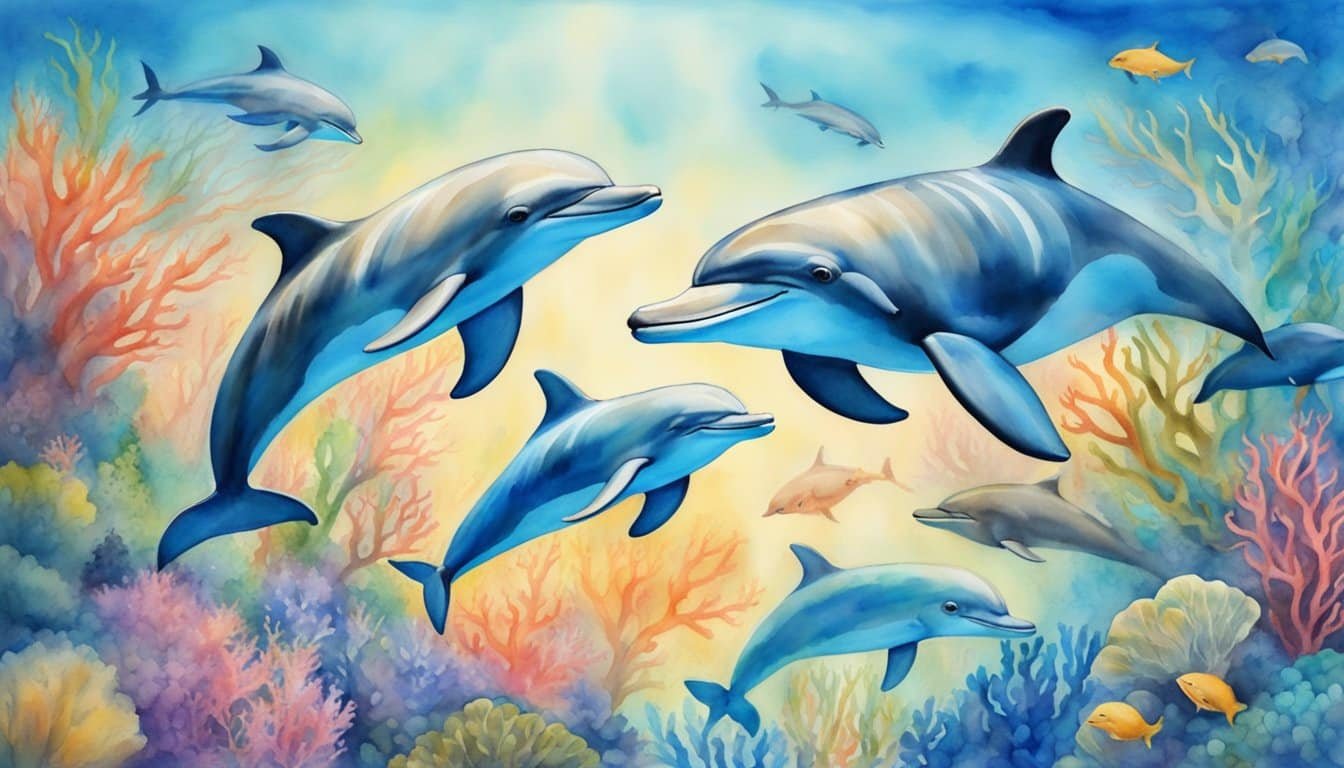Threats to Dolphin Populations
Dolphin populations around the globe face a variety of serious threats, many of which have the potential to impact their health and long-term survival dramatically.
Familiar Species and Their Habitats
Striped dolphins are known to inhabit the vibrant Mediterranean Sea, but even they are not immune to the pressures of their environment. The common bottlenose dolphins grace various waters from the northern Gulf of Mexico to tropical waters, and each habitat presents its own set of challenges, from habitat loss in coastal regions to the unpredictability of climate change.
Physical Traits and Biology
Despite their charming appearances, the biology of dolphins, such as their thick blubber, sharp teeth, and sophisticated echolocation abilities, defines not only how they interact with the environment but also how they cope with threats. For instance, the reliance on sonar can be disrupted by ocean noise pollution, a burgeoning issue for marine life.
Classification and Genetics
Dolphins belong to the order Cetacea and suborder Odontoceti, which highlights their place within the marine biodiversity spectrum. Their classification is not just academic taxonomy; it plays into how populations, like the critically endangered Yangtze river dolphin, are protected under conservation efforts such as the Marine Mammal Protection Act. Genetics equally inform conservation strategies, as recognizing distinct subspecies leads to targeted efforts to prevent their slide into extinction.
Dolphins in Society and Culture

Dolphins have long fascinated humans with their intelligence, social behavior, and undeniable charm. These marine mammals are not just amazing swimmers, but also exhibit complex social structures within their communities, often forming pods that can be thought of as their extended families. Each pod has unique communication practices, which include an astonishing array of clicks, whistles, and body language.
As playful creatures, dolphins often engage in activities that seem to be just for fun, leaping above the water‘s surface or riding waves alongside ships and surfers. Calves are especially spirited and learn rapidly by mimicking the behaviors of their elders. Thanks to their friendly disposition, dolphins often interact with swimmers, establishing fleeting yet enchanting connections with humans.
In certain cultures, dolphins are emblems of protection and good fortune. For instance, communities in Asia and along the coasts of the Indian Ocean honor them in folklore and art, attributing mystical attributes to these intelligent beings.
Moreover, their presence in aquariums, marine mammal parks, and dolphin tourism hotspots like Florida and the Gulf of Mexico has made dolphins familiar and beloved animals. These interactions with dolphins have not only become a part of local economies but also provide unique opportunities for scientific research and education.
Evidence of dolphins’ complex societies continues to grow, with studies highlighting their learned behaviors and traditions, from foraging techniques to play rituals, revealing a rich cultural tapestry that rivals our own. Indeed, the cultural lives of dolphins are a profound example of intelligence and social complexity in the animal kingdom.

